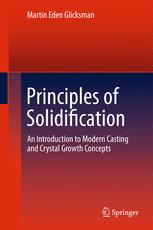

Most ebook files are in PDF format, so you can easily read them using various software such as Foxit Reader or directly on the Google Chrome browser.
Some ebook files are released by publishers in other formats such as .awz, .mobi, .epub, .fb2, etc. You may need to install specific software to read these formats on mobile/PC, such as Calibre.
Please read the tutorial at this link: https://ebookbell.com/faq
We offer FREE conversion to the popular formats you request; however, this may take some time. Therefore, right after payment, please email us, and we will try to provide the service as quickly as possible.
For some exceptional file formats or broken links (if any), please refrain from opening any disputes. Instead, email us first, and we will try to assist within a maximum of 6 hours.
EbookBell Team

0.0
0 reviews“Principles of Solidification” offers comprehensive descriptions of liquid-to-solid transitions encountered in shaped casting, welding, and non-biological bulk crystal growth processes. The book logically develops through careful presentation of relevant thermodynamic and kinetic theories and models of solidification occurring in a variety of materials. Major topics encompass the liquid-state, liquid-solid transformations, chemical macro- and microsegregation, purification by fractional crystallization and zone refining, solid-liquid interfaces, polyphase freezing, and rapid solidification processing. Solid-liquid interfaces are discussed quantitatively both as sharp and diffuse entities, with supporting differential geometric descriptions. The book offers: • Detailed mathematical examples throughout to guide readers • Applications of solidification and crystal growth methodologies for preparation and purification of metals, ceramics, polymers and semiconductors • Appendices providing supporting information on special topics covered in the chapters. Readers in materials, metallurgical, chemical, and mechanical engineering will find this to be a useful source on the subjects of solidification and crystal growth. Chemists, physicists, and geologists concerned with melting/freezing phenomena will also find much of value in this book.